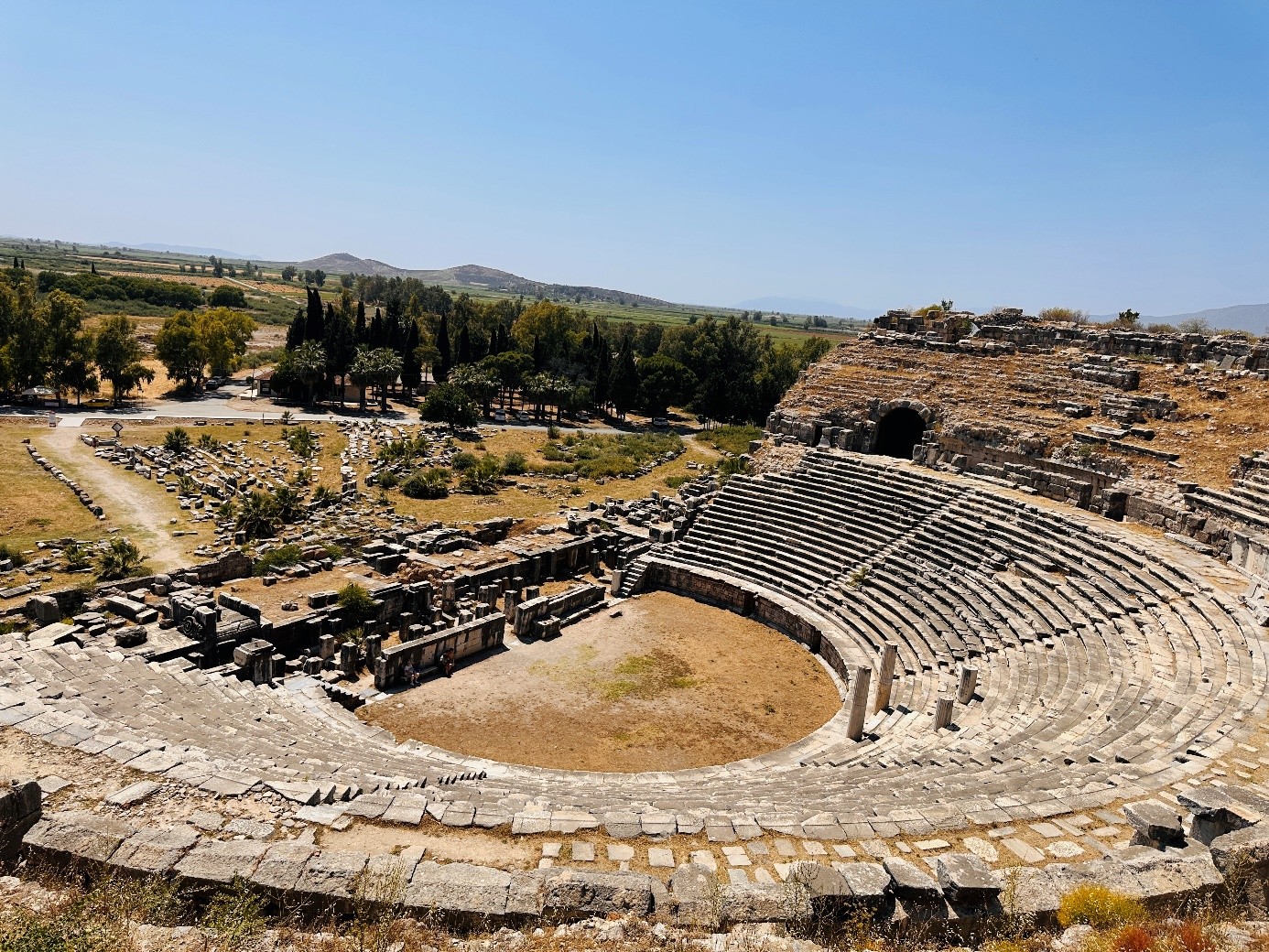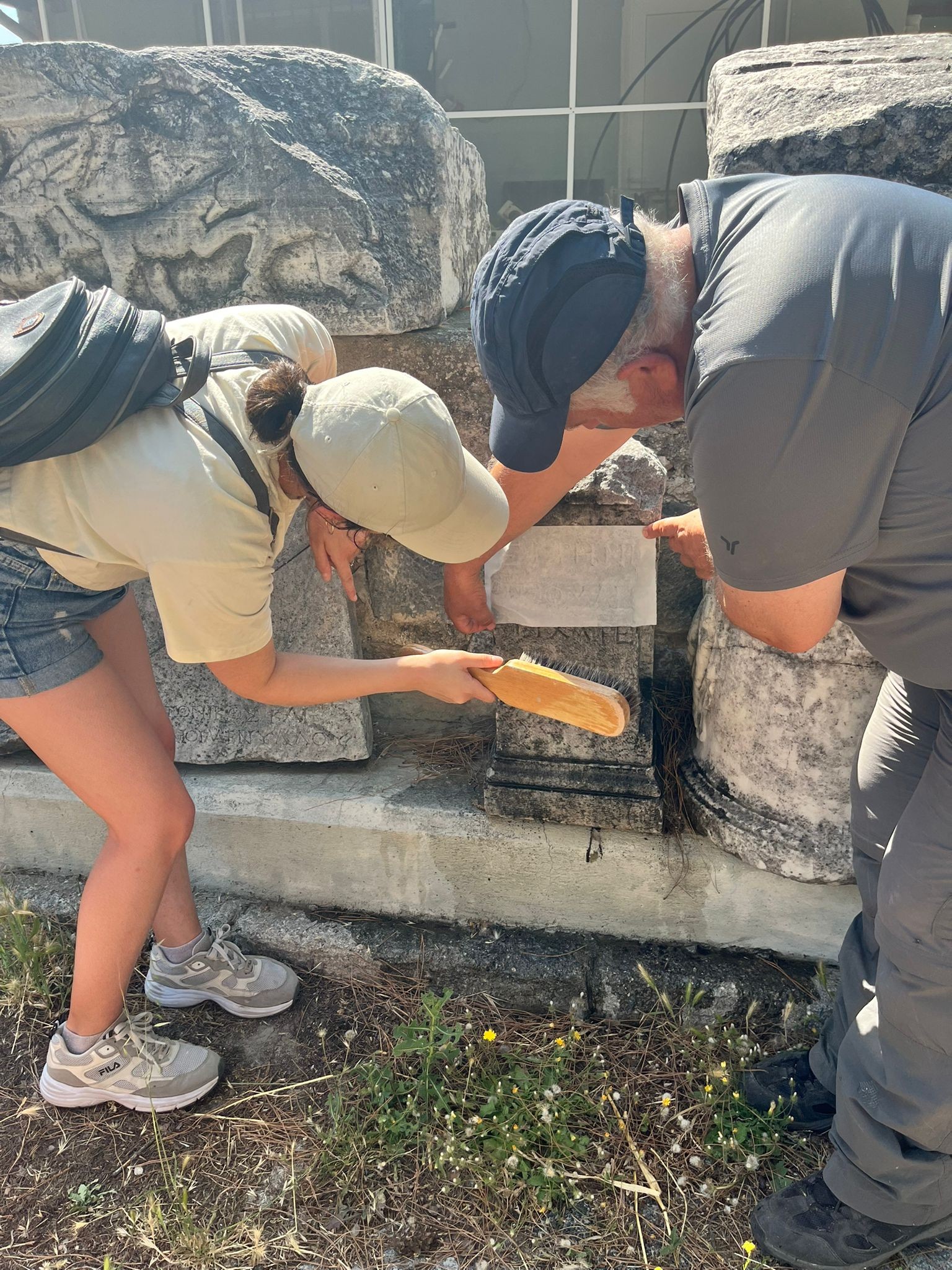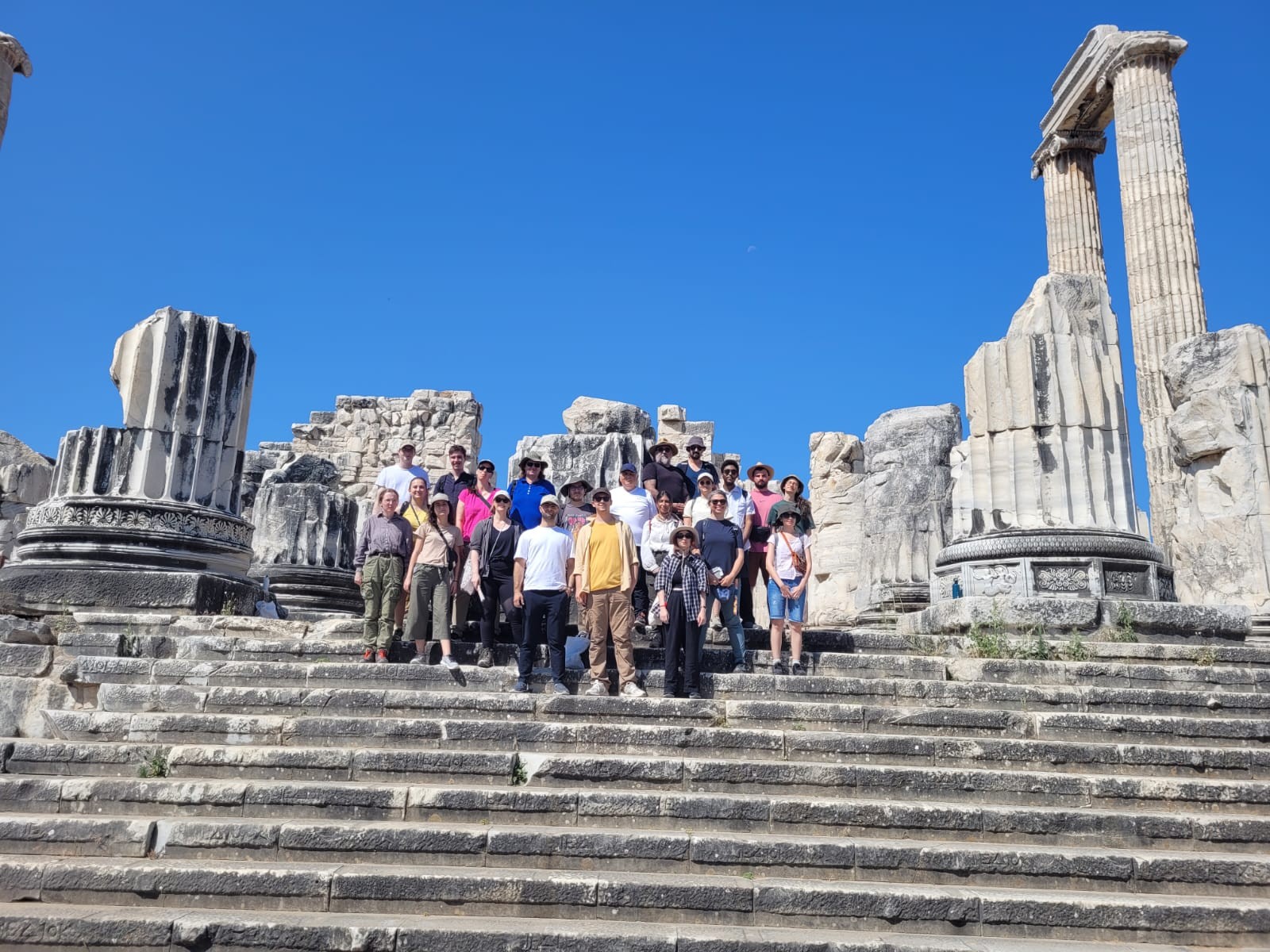Spring school reportWords Set in Stone: Exploring the Epigraphic Legacy of Miletos
1 July 2025
A week-long spring school on Greek Epigraphy offered young researchers the chance to engage directly with history through the study of inscriptions. In their report, participants Martina Dinelli, Katerina Grigoriadou, and Giorgi Kakhishvili reflect enthusiastically on their experience.

From 15–22 June 2025, we participated in Words Set in Stone: Exploring the Epigraphic Legacy of Miletos, a spring school on Greek Epigraphy organised by Kaja Harter-Uibopuu from the UWA Cluster of Excellence, which funded the programme, and Mustafa Adak from the Akdeniz University of Antalya. Around 20 participants from different academic backgrounds — Greek and Latin Epigraphy, Philology, Manuscripts Studies, Archaeology, Archaeometry, and Ancient History — came together, creating a lively, interdisciplinary atmosphere.
The spring school introduced participants to the fundamentals of Greek Epigraphy through a combination of lectures, interactive discussions, and practical on-site exercises. Our journey started with an introductory lecture by Professor Adak, who explained the different types of inscriptions, focusing on their contents and their materials. We then had the opportunity to put this knowledge into practice during our visits to the archaeological sites of Miletos, Didyma, Stratonikeia, Magnesia/M., and Priene, where we worked with the written artefacts in situ — we transcribed, translated, and contextualised the inscriptions while also exploring their materiality.

One of the most fascinating parts of the spring school was the hands-on sessions, where we learned how to document inscriptions and do squeezes. Being surrounded by such monumental sights was truly striking; we cannot forget the feeling of standing in front of the theatre of Miletos, the acropolis of Priene, the Temple of Apollo in Didyma, or the stadium of Magnesia/M.
During this week, we were hosted at the German excavation house in the village of Akköy, just a few kilometres away from the ancient city of Miletos. The peaceful setting and the scenic view provided the perfect atmosphere for fruitful discussions after our long and productive hours of working on site. Evenings were spent sharing ideas, enjoying traditional Turkish cuisine, and building connections — all in a warm and welcoming environment. We’re grateful for this enriching experience, which not only enhanced our knowledge in Greek Epigraphy but also gave us the chance to connect with fellow colleagues from different fields: a memorable week!
P.S. All the participants reportedly caught Bacillus Epigraphicus. Beware of people who have just returned from Miletos and talk about how great Epigraphy is. It is highly contagious!



